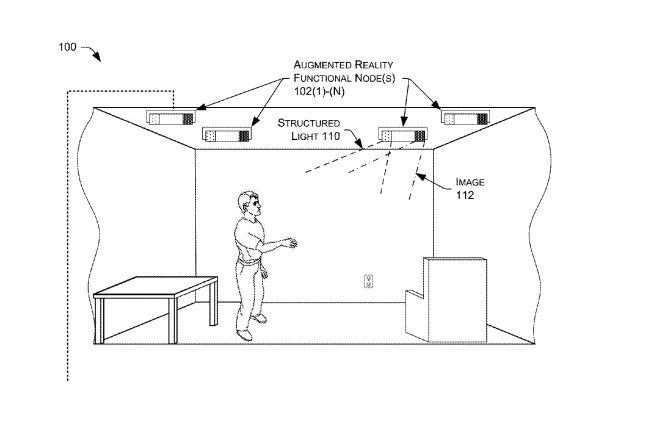
One is for object tracking in a three-dimensional environment and the other a reflector-based depth mapping of a scene, according to Bloomberg Business. The first would let users control devices with gestures thanks to cameras that capture and analyze a series of 3D images. The second would use a single light source, a reflector, a shutter mechanism, and a camera to determine the 3D depth of a scene. “The augmented reality may range in sophistication from partial augmentation, such as projecting a single image onto a surface and monitoring user interaction with the image, to full augmentation where an entire room is transformed into another reality for the user’s senses,” according to the second patent.
While the patents are just patents and not promises of things come, one of the examples included was the ability to request a book, which the system would then project onto a surface so you could read it. Instead of a physical keyboard or remote, you could execute commands on virtual ones. Voice control, knocking on walls, or snapping fingers could also help carry out commands or “summon an active zone within the scene.”
In addition to cameras, your living room could also be filled with audio sensors, motion detectors, weight sensors, temperature sensors, humidity sensors, and pressure sensors. If Amazon’s imagined system actually pans out, it could project audio and video into the environment — as well as “other content that can be perceived by user senses.” It specifically mentions “aromatic content,” so, who knows? While reading a virtual copy of Charlie and the Chocolate Factory, the scent of chocolate could waft into the room when Augustus Gloop falls in the river.
Editors' Recommendations
- Amazon’s new AR tool lets you fill a room with multiple virtual items
- Doodles become augmented reality art with Snapchat’s new 3D Paint tool
- Brush up on your makeup skills with YouTube’s new augmented reality feature


